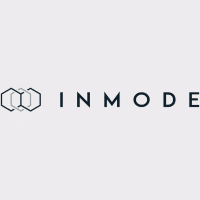
In today’s fast-paced world, the concept of digitalization has emerged as a transformative force, revolutionizing businesses across various industries. With the advent of advanced technologies and the increasing reliance on digital platforms, companies are embracing this wave of change to stay competitive in the market. In this article, we delve into the depths of digitalization, exploring its meaning and its profound impact on businesses worldwide.
Understanding Digitalization: Unveiling its Essence
Digitalization refers to the process of integrating digital technologies into various aspects of business operations. It entails adopting and utilizing digital tools, platforms, and strategies to streamline processes, enhance efficiency, and maximize overall productivity. By embracing digitalization, organizations can leverage the power of technology to optimize their workflow, make data-driven decisions, and deliver exceptional customer experiences.
The Transformational Power of Digitalization
- Enhancing Operational Efficiency: Digitalization empowers businesses to automate routine tasks, reducing manual efforts and human errors. Through the implementation of digital solutions, companies can optimize their operations, streamline workflows, and improve overall efficiency. From inventory management to supply chain logistics, digitalization enables businesses to operate seamlessly and stay ahead of the curve.
- Unleashing Data-driven Insights: Data is an invaluable asset in the digital era. By embracing digitalization, businesses gain the ability to collect, analyze, and interpret vast amounts of data, transforming it into meaningful insights. These insights provide a competitive edge, enabling companies to make informed decisions, identify emerging trends, and predict customer behaviors, resulting in more targeted marketing strategies and enhanced customer satisfaction.
- Enriching Customer Experience: Digitalization has redefined how businesses engage with customers. Organizations can establish seamless communication channels, personalized interactions, and enhanced support services through digital platforms. From intuitive websites to interactive mobile applications, digitalization enables businesses to create memorable experiences, foster brand loyalty, and gain a competitive edge in the market.
- Expanding Market Reach: With the increasing penetration of digital platforms, businesses can transcend geographical boundaries and reach a global audience. Digitalization opens up new avenues for market expansion, allowing companies to tap into previously untapped markets. Through e-commerce, social media, and digital advertising, businesses can amplify their brand presence, connect with diverse customer segments, and drive revenue growth.
The Road to Successful Digitalization: Key Considerations
- Cultural Transformation: Digitalization is not solely about technology; it also requires a cultural shift within organizations. Companies need to foster a digital-first mindset, encouraging employees to embrace change, learn new skills, and adapt to emerging technologies. By fostering a culture of innovation and continuous learning, businesses can navigate the complexities of digitalization effectively.
- Investing in Digital Infrastructure: To embark on the digitalization journey, companies need to invest in robust digital infrastructure. This includes modernizing IT systems, adopting cloud-based solutions, and ensuring cybersecurity measures are in place. By building a strong foundation, businesses can leverage technology to its fullest potential and drive sustainable growth.
- Collaboration and Partnerships: Digitalization often requires collaboration and partnerships with external stakeholders. Businesses can access specialized knowledge, gain insights, and accelerate their digital transformation efforts by partnering with technology vendors, industry experts, and digital service providers. Collaborative efforts can help companies overcome challenges and achieve digital success more effectively.
Embracing the Digital Age: A Paradigm Shift for Businesses
As digitalization continues to reshape industries, businesses must recognize its transformative potential and embrace this new era. It is no longer a matter of choice but a necessity for survival and growth. By harnessing the power of digital technologies, organizations can unlock unprecedented opportunities, drive innovation, and establish
a strong digital presence. Here are a few strategies businesses can adopt to navigate the digital age successfully:
- Craft a Compelling Online Identity: Building a strong online presence starts with developing a compelling brand identity. This involves creating a visually appealing and user-friendly website, incorporating engaging content that resonates with the target audience. From captivating visuals to persuasive copy, businesses should strive to deliver a cohesive and memorable brand experience across all digital touchpoints.
- Optimize for Search Engines: Search Engine Optimization (SEO) plays a crucial role in driving organic traffic to a website. By conducting keyword research, businesses can identify relevant keywords and incorporate them strategically into their website’s content. Optimizing meta tags, headings, and URLs can further enhance a website’s visibility in search engine results, leading to increased online visibility and potential customers.
- Content is King: Creating high-quality and valuable content is paramount in the digital landscape. By producing informative blog posts, engaging videos, and interactive infographics, businesses can position themselves as an industry thought leaders and attract a loyal following. Consistently delivering valuable content boosts website traffic and establishes trust and credibility among target audiences.
- Harness the Power of Social Media: Social media platforms offer unparalleled opportunities for businesses to connect with their target market on a personal level. Businesses can curate engaging content, participate in discussions, and build a community of loyal followers by identifying the platforms where their audience is most active. Social media also enables businesses to run targeted advertising campaigns, driving brand awareness and generating leads.
- Embrace Video Marketing: Video content has gained tremendous popularity in recent years, with platforms like YouTube and TikTok becoming dominant forces. Incorporating video marketing into a digital strategy allows businesses to engage audiences visually and communicate messages effectively. Whether it’s product demonstrations, customer testimonials, or educational content, leveraging video can significantly enhance brand visibility and engagement.
- Mobile Optimization: In an increasingly mobile-centric world, businesses must prioritize mobile optimization. Ensuring that websites are responsive and provide a seamless user experience across various devices is crucial for capturing and retaining mobile users. Mobile-friendly designs, fast loading speeds, and intuitive navigation contribute to a positive user experience and can boost search engine rankings.
- Data Analytics and Insights: The digital landscape provides an abundance of data that can inform decision-making and drive growth. Businesses can gain valuable insights into website performance, user behavior, and campaign effectiveness by leveraging web analytics tools. Analyzing this data enables businesses to identify areas for improvement, optimize strategies, and refine their digital marketing efforts.
In conclusion, digitalization is transforming businesses in unprecedented ways. By embracing digital technologies, implementing effective digital strategies, and prioritizing the customer experience, businesses can position themselves for success in the digital age. It’s essential to stay agile, continuously adapt to evolving trends, and embrace innovation to stay ahead of the competition. In this digital era, the possibilities are endless, and businesses harnessing digitalization’s power are poised to thrive.




























